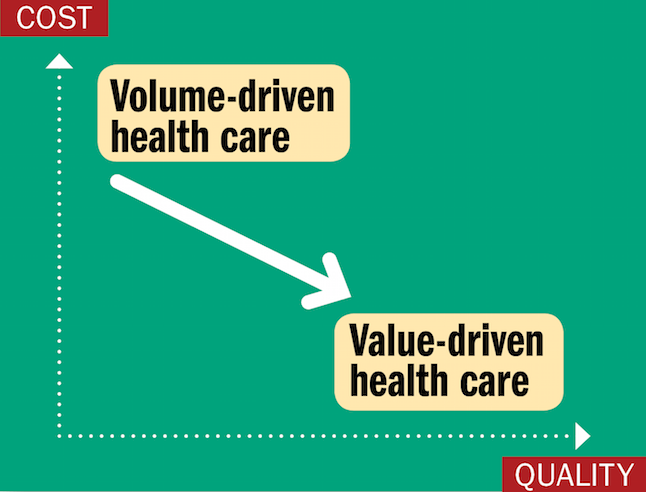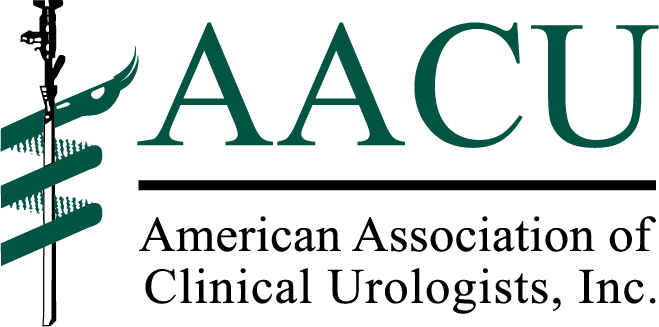Article
Achieving ‘value’ will be make-or-break proposition
“Value” is more than a buzzword in medicine. It’s the way of medicine’s world. Understanding just what it means and how to achieve it could make or break urology and other specialties.
National Report-“Value” is more than a buzzword in medicine. It’s the way of medicine’s world. Understanding just what it means and how to achieve it could make or break urology and other specialties.

Dr. LitwinHistorically, medicine has been focused either on cost or quality, according to Mark S. Litwin, MD, MPH, chair of urology at UCLA’s David Geffen School of Medicine in Los Angeles.
“Initially, a lot on cost… and then more recently on quality. But the focus was on one or the other, in its own vacuum,” Dr. Litwin said. “In the last year or two, there has been an emphasis on value, which really came to the forefront with the Affordable Care Act. And when you talk about value, it’s specifically defined as incorporating both cost and outcomes.”
Also see - ACA, MACRA: What they mean for you, patients
Dr. Litwin is among the first researchers to study the concept of value and apply it to services urologists commonly perform, including treatment of BPH. He presented an abstract on the topic at the American Association of Genitourinary Surgeons 2015 meeting in San Francisco, where he, Christopher Saigal, MD, Alan Kaplan, MD, and other UCLA colleagues explained how they had developed a method for developing a value-based pathway to deliver optimal BPH care for $3,045 per episode.
The number isn’t what’s important to urology practices; rather, it’s the pathway used to arrive at that number. Urology practices around the U.S. can apply his methodology, he said, to arrive at pricing for specific diagnoses, allowing them to be competitive and profitable in their communities in today’s value-driven marketplace.
NEXT: Value as an equation
Value as an equation
The equation Dr. Litwin uses to arrive at value-based services is value equals quality over cost.
“If you have quality over cost (numerator and denominator), you can increase the numerator, decrease the denominator, and both of those would serve to improve value. That’s what value really is,” Dr. Litwin said.
“To improve value, you increase quality and decrease cost. They’re done simultaneously.”
Read: Health research agency could be eliminated
There are variations on this theme. Some University of Michigan physicians use the equation of quality equals outcome over cost, but with the addition of appropriateness, according to Jim Dupree, MD, MPH, assistant professor of urology at the University of Michigan, Ann Arbor.


Dr. DupreeTheir equation is that value is appropriateness times quality over cost. Dr. Dupree used treatment for prostate cancer as an example.
“You can have an outstanding prostatectomy with good continence and good erectile control, and it’s done without readmission or complications. But what if the patient had alternatives to surgery in the first place?” he said. “So, we also are thinking about appropriateness and how that plays into value. It’s complicated, and it’s uncomfortable to talk about sometimes.”
In this context, appropriateness has to do with surgical interventions. For a given surgical intervention, what were the other options for the patient, what nonsurgical options were available, and would any of those nonsurgical options have been as appropriate as the surgery performed or considered?
Dr. Dupree admits that the idea of appropriateness is thinking outside of the box and is difficult to operationalize.
“But I think it’s important because some patients are likely getting surgery that could have otherwise been managed with nonsurgical interventions. That’s important when we talk overall about value,” Dr. Dupree said.
NEXT: Breaking things down
Breaking things down
UCLA is engaged in a number of different projects in various urologic diseases, including BPH, kidney stones, renal masses, prostate cancer, bladder cancer, and others, where the faculty and staff are working together to simultaneously improve the patient experience and quality of care. That requires some groundwork, including dissecting the cost structure of resources needed for each service and trying to minimize that, according to Dr. Litwin.
He and his colleagues are using a concept from the business world called time-driven activity-based costing, or TDABC. The idea behind TDABC is to identify and minimize all costs for services.
“We are doing what they call a ‘deep dive’ into every single element of what feeds the cost,” said Dr. Litwin, who is also professor of health policy and management at UCLA’s School of Public Health. “That refers not only to the doctor’s time and effort, but also how many minutes the nurse spends with the patient, how many minutes the front desk person spends with that patient, what the rent is per square foot in a space that you’re using for the patient, the depreciation of the equipment that you’re using. It’s basically everything.”
Have you read: Urologists take aim at prior auth, work force at AACU conference
If it takes a medical assistant 11 minutes to room the patient and take vitals and the initial history, that’s 11 minutes out of an 8-hour workday, a 5-day workweek. You have to take into consideration annual salaries and benefits. Then, it comes down to putting all of the information into an analytic spreadsheet, Dr. Litwin said, in order to see exactly what resources it takes to provide a service.
That’s how UCLA arrived at the $3,045 per episode cost for BPH. In that example, Dr. Litwin cited a cost-cutting measure UCLA used to increase value.
“We often have patients who need bloodwork drawn, and, for their convenience, they have their blood drawn in our office. But it turns out, the time that it takes our nurses to do phlebotomy, a PSA, creatinine, or other blood test is significantly higher than if we just send them right across the hall to the lab,” Dr. Litwin said.
Eliminating the cost didn’t diminish quality because the lab is across the hall. It doesn’t inconvenience patients, according to Dr. Litwin. If it did-if the lab were 3 miles away, for example-sending patients there would be inconvenient and wouldn’t work in the equation. A change that cuts costs while diminishing quality doesn’t improve value.
NEXT: How is value-based care defined?
How is value-based care defined?

Dr. KaufmanAmong the challenges to urologists and other physicians is that while health care is moving toward value-based reimbursement, no one has yet to define what that means, according to Jeffrey Kaufman, MD, a urologist in Orange County, CA, president of the AUA’s Western section, and assistant clinical professor of urology at the University of California, Irvine.
From the AACU: Bills provide relief from meaningful use requirements
“Certainly the concept includes quality, outcomes, cost, and appropriate care, but who defines quality outcomes and what metrics are used?” Dr. Kaufman said. “The specialty-not others-has to define these parameters for the concept to be meaningful and relevant.”
That work is beginning. One example is the Michigan Urological Surgical Improvement Collaborative (MUSIC), a group of physicians who represent the majority of urologists in the state and who use data to drive quality improvement for men receiving prostate cancer care in Michigan. The group, which is funded by Blue Cross Blue Shield of Michigan, met in September 2015 to discuss appropriateness criteria for use of active surveillance in men with prostate cancer-an effort led by MUSIC urologists Michael Cher, MD, of Wayne State University, and Brian Lane, MD, PhD, of Spectrum Health. The MUSIC collaborative has also established and disseminated appropriateness guidelines for CT and bone scan imaging for prostate cancer, according to Dr. Dupree.
The time is now
Taking charge and delivering value-based costing in urology needs to be a top priority for the specialty, according to Dr. Kaufman.
The Medicare Access and CHIP Reauthorization Act (MACRA) “speaks to alternative payment models by using financial incentives for participation in and penalties or fines for continuing fee for service,” he said. “However, many of these new models are designed for primary care health maintenance (diabetes, COPD, heart disease, hypertension). The challenge will be to make them work for urologists, without simply signing onto reduced-fee contracts that use standard fee-for-service models.
“This is the coming world of medicine-a big change from what we’ve known. If we can maintain quality (and we have to take the lead to define what quality means) and cut costs, we will end up winners. The group that does their homework and negotiates good contracts will end up financially sound. The group that has a poor grasp of what is needed for optimal care will lose money and won’t be around for much longer.”
No doubt, that’s not an easy task. In large institutions, a hospital-based urology practice might find it difficult to get the needed information, according to Dr. Litwin.
“If you work in a large institution or an academic health center, that’s where the transparency issue comes along because sometimes you have to pry that out of the institution. If you’re working in a community-based small or large private practice, I think there is no issue with transparency because the practice is well aware of all those costs,” he said.
Also see - The president, the Supreme Court, and ACA: A urologist’s view
Dr. Litwin says there is no easy way to determine value and no cookie-cutter approach because costs, including salaries, benefits, rents, and more, vary from place to place.
“It’s a matter of actually rolling up your sleeves and sitting down and doing it. Business consultants can come in and help with this,” he said. “You have to go digging. And it takes work to figure it all out, but it’s worth it.”
NEXT: Consider this an opportunity
Consider this an opportunity

Dr. KapoorThe upcoming changes in reimbursement are a tremendous opportunity for specialty practices-in particular urology, according to Deepak Kapoor, MD, chairman of health policy for LUGPA and chairman and CEO of Integrated Medical Professionals, the large urology group in metropolitan New York.
Interview: ICD-10, quality initiatives present hurdles, solutions
“Unlike most specialties, urologists see patients with symptoms, not diagnoses,” Dr. Kapoor said. “As a result, urology can be considered a ‘clinical cul-de-sac.’ We seldom require other specialties to co-manage patients with us.”
As a result, Dr. Kapoor says this enables urology practices that are large enough or well connected to develop a full suite of services to engage in risk contracting, independent of a primary care entity. Integrated Medical Professionals, for example, has poured significant resources in recent years into developing an infrastructure for value-based purchasing.
“Our practice already has more than 40 clinical pathways that are utilized as standardized services in our offices across the New York metropolitan area. We have a very comprehensive compliance program to ensure that we’re monitoring follow-up,” Dr. Kapoor said. “So, in our specialty, we’re able to offer third-party [payers] standardized care throughout our multiple offices, employing clinically effective, high-value, consensus best practices to optimize our outcomes.
“And we have hard data that backs that up. We’re really excited about having the ability to go to multiple different risk-sharing entities, whether it be an accountable care organization or medical home… and carve out the urology component.”
Blog: Practice ‘efficiency’ is not a dirty word but a noble goal
It’s the first time in recent memory, Dr. Kapoor said, that urology groups can compete with hospitals.
“Historically speaking, independent groups were at a disadvantage when it came to competing with hospitals because hospitals got paid more to do exactly the same services,” Dr. Kapoor said. “Now, given that we can do a lot of the same services done in a more expensive hospital-based setting on an outpatient basis, we have a strong competitive advantage.”
NEXT: Understand your market
Understand your market
The message? To be able to compete in the market, practices have to leverage market share. To do that, urologists need to understand their markets and provide what these markets want, according to Dr. Kapoor.
Have you read: Why organized medicine needs to operate more like Google
“It’s very important for physicians to realize that they need to behave in a pro-competitive fashion. You can’t leverage market share purely for the purpose of extracting higher fees. Urology groups have to demonstrate that they are the value provider of services,” he said.
That could be a tall order for small groups and solo practices. In fact, Dr. Kapoor said the viability of small practices could be in jeopardy unless they join forces.
“One of the first things urologists need to do is stop viewing the other practices in their communities as competitors and start viewing them as potential partners in assuming these risk contracts,” Dr. Kapoor said.
Access through referrals also will be a big part of the equation for smaller practices, according to Dr. Dupree. Primary care doctors and others are looking for urologists who offer high quality at a low cost and who are also good communicators.
“There’s a lot that can be lost in different transitions of care that can lead to higher cost or lower value. So, one of the advantages of smaller practices is they’re more nimble, presumably, and also, therefore, might be able to offer more personalized communication with referring physicians and a bit more of a nimble relationship with those physicians,” Dr. Dupree said.
“If you’re in a smaller group and can establish yourself as a urologist in the community that offers high-quality surgery with low complications and very good transitions of care and communications with referring physicians, I think you will be on the receiving end of a lot of referrals, when the primary care provider is in a value-based contract or a value-based system.”
Read: Watch out for these 7 common EHR mistakes
The thing urologists can’t do is sit idle.
“I’m more bullish about the future of our specialty than I have been in years,” said Dr. Kapoor. “The market has finally given us a timeline for what we need to do and when we need to do it. We can either opt to ignore the realities of the market, in which case I think that we’re doomed, or we can choose [to move forward].
“This is an enormous opportunity for us to take control of how our specialty is going to be practiced. We have been living for the last half decade with the SGR hanging over our heads, wondering from year to year what services would get cut, what we would get paid from, and how to manage our practices. That has been eliminated. We now have a roadmap for success. It’s up to us to seize the opportunity.”
NEXT: Recommended reading, viewing
Recommended reading, viewing
Urologists and other specialists have begun publishing data on value-based care and appropriateness criteria.
Key papers (plus a webcast) include:
Kaplan AL, Agarwal N, Setlur NP, et al. Measuring the cost of care in benign prostatic hyperplasia using time-driven activity-based costing (TDABC). Healthc (Amst) 2015; 3:43-8.
Videtic GM, Chang JY, Chetty IJ, et al. ACR appropriateness Criteria® early-stage non-small-cell lung cancer. Am J Clin Oncol 2014; 37:201-7.
WEBCAST: Thought leaders discuss how value-based care is being applied
to urology. http://bit.ly/Valueurology
Chopra V, Flanders S, Saint S. The Michigan Appropriateness Guide for Intravenous Catheters (MAGIC): Results From a Multispecialty Panel Using the RAND/UCLA Appropriateness Method. Ann Intern Med 2015; 163(6_Suppl):S1-S40.
Meddings J, Saint S, Fowler K. The Ann Arbor Criteria for Appropriate Urinary Catheter Use in Hospitalized Medical Patients: Results Obtained by Using the RAND/UCLA Appropriateness Method. Ann Intern Med 2015; 162(9_Suppl):S1-S34.
McLaughlin N, Burke M, Setlur NP. Time-driven activity-based costing: a driver for provider engagement in costing activities and redesign initiatives. Neurosurg Focus 2014; 37(5):E3.
Akhavan S, Ward L, Bozic KJ. Time-driven Activity-based Costing More Accurately Reflects Costs in Arthroplasty Surgery. Clin Orthop Relat Res Feb 27, 2015 [Epub ahead of print].
More from Urology Times:
Winning at EHRs and meaningful use is ‘Mission: Impossible’
Extracapsular prostate cancer leads patient to sue
Your patients’ personal information is at risk
Subscribe to Urology Times to get monthly news from the leading news source for urologists.




